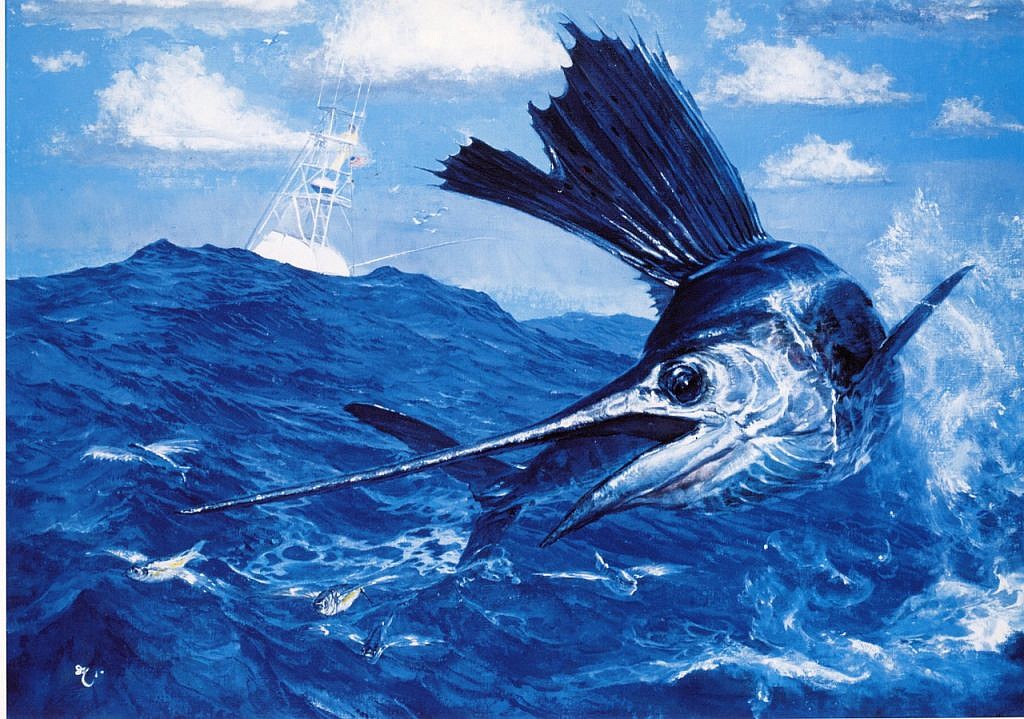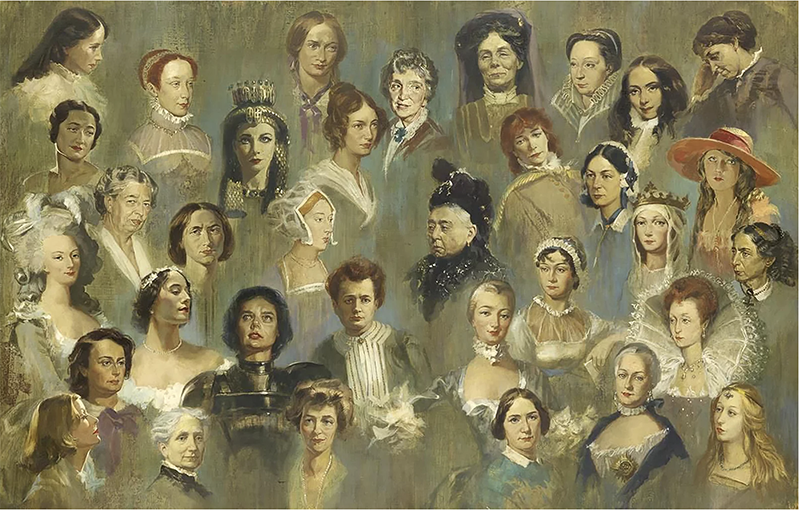
by Brooke Chilvers
Saltwater gamefish artist Stanley Meltzoff (1917-2006), the inventor of piscatorial underwater oceanic vistas, turned to painting fish only in his middle age, and then only after color photography and new printing technologies had seriously encroached on the illustrator’s job as a creator of images for reproduction in widely read publications. Then the bottom fell out of the family magazine industry all together, signaled by The Saturday Evening Post ceasing weekly publication in 1963.
To top it off, Meltzoff’s household-sustaining assignment of a record-breaking 65 exacting magazine covers for Scientific American, illustrating everything from high-power telescopes to caladiums, came to a surprising sudden end. His wife fell ill, his daughters needed funds for college, and age 60 was visible on the horizon.

Simply put: “I tried to think of something to do,” wrote Meltzoff in the generously illustrated 2010 book, Stanley Meltzoff – Picture Maker, written by the artist, and fan and art historian Mike Rivkin. That turned out to be painting pelagic gamefish species, at an average rate of a painting per month for the next 30 years, resulting in an oeuvre of some 350 piscine paintings.
Diving around the world for two years to study and swim with all thirteen species of billfish in their waters is an unlikely outcome for the son of a prominent Manhattan synagogue cantor, who’d sung before the tsar as a member of the Russian Imperial Choir. Although born in Harlem, Stanley had a New Jersey-shore soul and lived there most of his life.

At eight years old, he enrolled in a correspondence course for drawing comics. By fifteen, he was attending City College of New York during the day, and taking evening art classes at NYU. Stanley was surprised to graduate Phi Beta Kappa, in science in 1937, then landed a job as a teaching assistant in painting and art history at CCNY while earning a Master in Fine Arts in 1940 at the Institute of Fine Arts of New York University. His erudite thesis was on the history of taste and the revived interest in the brothers Le Nain, Vermeer, and El Greco. Perpetually curious and always a scholar, at age 71 Meltzoff published his impossible-to-read 422-page book, Botticelli, Signorelli and Savonarola ‘Theologica Poetica’ and Painting from Boccaccio and Poliziano, which is available on the internet.
Meltzoff’s real art education began during World War II when he was assigned to the North African/Italian theater of operations of Stars and Stripes. For four years he followed the war, progressively setting up its first offices in Algiers, then Palermo, Naples, and finally Rome, where he stayed for several years. In Italy, in 1945, he illustrated Puptent Poets of the Stars and Stripes, Mediterranean, whose pages still resonate with the voices of the machine gunner and the company cook, writing short, ironic poems “during the lull of battle.”

Along the way, he studied Italian Renaissance masterworks close-up in museums and in their hiding places, including Montegufoni Castle southwest of Florence. Faced with Botticelli’s Primavera, he even kissed its Venus on the lips. Stanley returned to his teaching job in New York City with Tiepolo’s blue Venetian skies burnt into his eyes.
Already a Jersey water rat as a kid, he spearfished for striped bass, and in 1946 began diving with a mask and tank, adding an underwater camera in 1949. That same year, he abandoned academia for full-time “picture-making” (his preferred term). He illustrated books such as Wheat Modern Evolution Of Plant Species and Bee Pollination Fertilization Of Flowers Orchid Cymbidium. For $300 a pop, he created flashy paperback book covers for a long list of pulp titles and science fiction.

In fact, Meltzoff is credited with setting the tone and style for 1950s sci-fi illustration, with his covers for Isaac Asimov and Robert A. Heinlein. Still, he stopped this work as soon as he could afford to, preferring color print advertisements for United Engineers and Construction, and “Eminent Women” for McCall’s (May, 1959). Meltzoff did only one cover for The Saturday Evening Post, of a bust of Benjamin Franklin. But it was reproduced five times in five years on the president’s birthday, each featuring a different famous quote.
In those days, a single assignment from Life paid off the mortgage of the Jersey Shore home where he’d moved in 1955. There he built a family, as well as a studio full of skylights and mirrors so as to consider his models from all sides.

Large spreads of Meltzoff’s gamefish appeared in Sports Illustrated for articles such as “The Life and Death of a Tarpon” (February, 1969); in Field & Stream, including “Bluefins on the Move” (October, 1983); and National Geographic. But the image seen by more than 187 million people was the cover for the 1976 bicentennial-year phone book, in homage to Norman Rockwell, reproduced across the nation for local directories.

Meltzoff’s next big strike was when the collector who’d bought dozens of his originals went bankrupt, allowing the artist to reacquire them for a song. To exhibit this valuable inventory, he turned to Fred King of Sportsman’s Edge Gallery in Manhattan. And the rest is fishing-art history.
Two days of snow inspired Brooke Chilvers to write about Stanley Meltzoff and his underwater universe.
